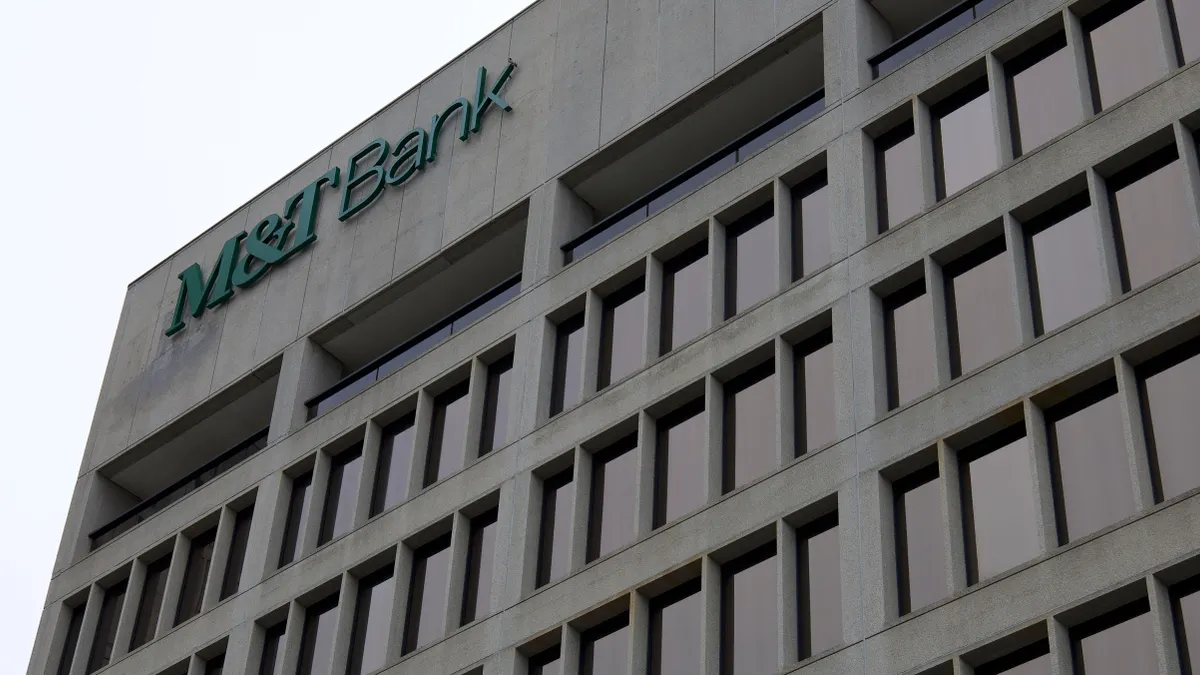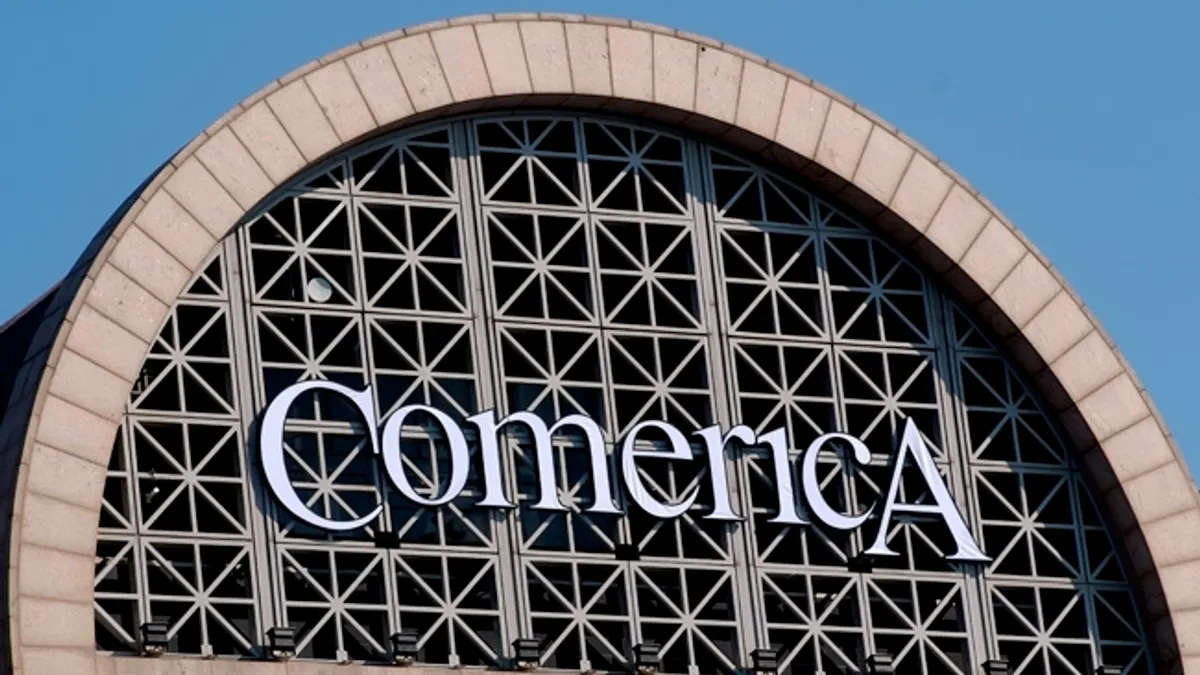The most active bank merger-and-acquisition environment in years has lenders chasing scale in far-flung areas of the country. But regional bank M&T is taking a different tack.
René Jones, the Buffalo, New York-based lender’s CEO, made it clear Thursday the bank is uninterested in pursuing national scale, as many other big banks are keen to do lately given a more permissive regulatory climate. Instead, M&T is keeping its focus on being a dominant player within its current markets.
The $211 billion-asset bank has about $162.7 billion in deposits and 960 branches across 13 states from Maine to Virginia. Jones, for his part, seemed to cast doubt on banks’ ability to execute at the same level as their footprint expands.

“As you get further and further away from home and [add] more geographies, I think the management challenge goes up,” Jones said Thursday at the BancAnalysts Association of Boston conference. “Because you’re really an organization that is built around culture, and cultural norms, some of which are documented, many of which are not.”
“Having enough people to deploy across that kind of a geography, who will make the same decisions that you make, I think, becomes more and more challenged as you get larger,” he said.
The pursuit of greater scale has been evident in bank acquisitions made by Ohio-based regionals Fifth Third and Huntington, which are both chasing growth in Texas and the Southeast, and by PNC, which is buying Colorado’s FirstBank to fast-track its Colorado and Arizona growth ambitions.
PNC on Friday also said it’s opening 100 more branches on top of what it announced one year ago, upping its branch investment to about $2 billion. Meanwhile, JPMorgan Chase continues to open branches across the country.
Jones acknowledged buzz around national scale, “but the question is, what is your reputation and the awareness and how well you do your job for those people that you concentrate on?” he said.
That doesn’t mean M&T is shying away from acquisitions entirely, indicated Jones, who’s been CEO of the bank since 2017. He was the bank’s CFO for a dozen years prior to that.
With M&T’s capital position – the bank’s common equity tier 1 capital ratio was about 11% as of Sept. 30 – the lender could make an acquisition or some other investment, Jones said, adding his highest priority is ensuring M&T has the capabilities its businesses need.
“If we had the right transaction to do, we would do it,” he said.
Mergers of equals “don’t make sense” to Jones, and there’s no lower limit for M&T, in terms of acquisition target size.
“There could be something out there that really is maybe not that meaningful to the bank, but really meaningful to the region,” he said. “We’ve decided not to be a national bank, so we better be focused on achieving our goal where we are.”
Jones also addressed technology evolution at the regional bank, which expects to finish a general ledger system upgrade in the first quarter of next year, among other changes.
With an eye toward becoming more modern, M&T is spending three times more on technology than it did eight years ago. The bank’s third-quarter non-interest expense rose 5% year over year, in part due to higher costs “associated with enhancements to the Company's technology infrastructure,” according to the bank’s earnings release last month.
Where about 60% of tech resources used to be outsourced, today, 80% are in-sourced, Jones said. “We needed to do that to sort of gain control so that we could make the changes that we thought we wanted to make,” he said.
Alongside that, M&T overhauled its tech staff. “There’s not a single person left in IT leadership today that was there” eight years ago, he said.
Similarly, “eight years ago, we didn’t have a single person in the company with the title of engineer,” he said, whereas today, the bank has about 1,000 engineers.
Resiliency is key, he said, and the bank’s systems now run at a more consistent pace than they used to. “Stuff is going to happen to you, whether it be cyber, whatever it may be,” he said. “The question is, how quickly can you react? And how quickly can you make it a non-event for your customers?”
“With the complexity that’s going on today, we think that’s actually one of the most important things that we’re now poised to be able to execute on,” he said.
In particular, the bank has doubled down on data integrity and access across the bank, establishing “a very regimented process to understand our data.”
“We’re not going to be the ones that develop the AI solutions,” he said. Those are “going to be provided by vendors to us. And so to differentiate yourself, having that quality understanding of your data, and how you use it, how it gets produced, I think, is really important.”













